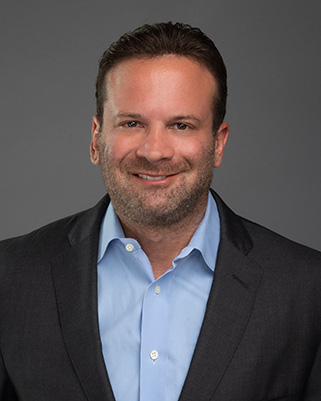Uncontrollable hand tremors can become a living nightmare. The most common form of this movement disorder is essential tremor (ET). ET is progressive, meaning tremors will worsen over time. Aggravated shaking demolishes tasks that those with steady hands take for granted. The ability to prepare and eat food, fasten buttons and zippers, write checks or even sign one’s name, recreational activities, typing, etc. is gradually taken away—a great loss! Quality of life and self-esteem suffer as the need to rely on others increases. Social activities become emotionally painful, and many with ET begin to isolate.
Treating tremors by intervening in the brain
Medication is the first line of tremor treatment. However, drugs are ineffective in about half of cases, and even when they control tremors, unpleasant side effects can occur, especially as dosage increases.
Another solution is neurosurgical interventions to physically interrupt abnormal tremor signals in the brain itself. These signals originate in the brain’s cerebellum and travel along a tremor pathway from the cerebellum to a small signaling “relay center” called the thalamus. This center is the intervention’s target for cutting off the signals before they can leave the brain and travel to hands and arms.
Deep Brain Stimulation (DBS)
Until recently, the most common neurosurgical procedure has been Deep Brain Stimulation (DBS). DBS is an invasive, image-guided surgery to drill a hole in the skull and implant electrodes at the thalamus. With a battery pack surgically placed in the chest, wires are inserted in the neck to connect the power source with the electrodes. This allows a mild electric current to be delivered to the target area of the thalamus, which interferes with transmission of tremor signals so hands can function normally.
DBS is a long procedure with inpatient stay, but most patients are very happy with the results once the wires are connected and the proper settings are adjusted. As with any invasive neurosurgery, there are risks: infection, bleeding in the brain, displacement of electrodes, and small chance of strokes are the most common. Also, the batteries need to be replaced every several years.
Technology advance brings new risk
Naturally, medical device manufacturers continually strive to refine the efficiency, performance and effectiveness of their products. Sometimes, the push for improvement backfires. In August, 2019 one such company, Medtronic, initiated a recall of its DBS imaging-based navigation product, the StealthStation Auto-registration Feature. During the surgery, this software (distributed Feb. 1 – May 1, 2019) is used together with its stabilizing head frame and imaging system to provide a real time map of a patient’s brain to help surgeons navigate surgical tools and implants during DBS surgery.
Placing electrode wires in the brain to control tremors is a delicate operation that requires spot-on accuracy. Unfortunately, the StealthStation proved disappointing, and FDA listed Medtronic’s recall as Class I—the most serious kind—due to risk of injury or even death. The FDA’s June 1, 2020 report states:
Medtronic has recalled the auto-registration feature of the StealthStation DBS Software due to inaccuracies caused by minor patient movements during the auto-registration process when used with NexFrame during a DBS procedure, which may not be detected by the surgeon or the device system. This may provide inaccurate registration data which could lead surgeons to inaccurately navigate lead placement during image guided DBS procedures. This could result in serious or life-threatening patient harm.
As of June 2020, a total of 33 medical device reports were identified: 22 related to device malfunction and 11 related to injuries.[i]
Medtronic issued an urgent medical device correction letter to its customers with safety recommendations The FDA is working with Medtronic to determine if more measures are needed.[ii] The FDA asks that any problems related to this recall be voluntarily reported to its MedWatch program.
Noninvasive alternative to DBS
Now there is a noninvasive, outpatient alternative to DBS that offers immediate, effective and lasting tremor control. It is MRI-guided Focused Ultrasound (MRgFUS). For qualified patients, the procedure involves beaming ultrasound energy through the skull, with no incisions or drilled holes. When the beams converge (meet) at the targeted area, they create enough heat to destroy the tiny relay center in the thalamus. The interruption in tremor signals is virtually immediate. By the time the procedure is done, patients have regained the normal function of their dominant hand. (NOTE: DBS can treat both sides, but as of this writing, MRgFUS is only approved to treat one side of the thalamus.)
All neurosurgical procedures involve some risk, but the more invasive and complex the technology, the greater room for error. The Medtronic experience is a cautionary tale for doctors and patients alike. It’s no wonder that more people with ET are choosing the elegant simplicity of MRgFUS over DBS.
NOTE: This content is solely for purposes of information and does not substitute for diagnostic or medical advice. Talk to your doctor if you are experiencing pelvic pain, or have any other health concerns or questions of a personal medical nature.
[i] “Medtronic recalls StealthStation auto-registration feature due to inaccuracies during deep brain stimulation (DBS) procedures.” FDA report as of June 1, 2020. https://www.fda.gov/medical-devices/medical-device-recalls/medtronic-recalls-stealthstation-auto-registration-feature-due-inaccuracies-during-deep-brain?utm_campaign=2020-06-01%20Recall%20Medtronic%20StealthStation&utm_medium=email&utm_source=Eloqua
[ii] Brooks, Megan. “Medtronic’s StealthStation DBS Software Subject of Class I Recall.” Medscape, June 1, 2020. https://www.medscape.com/viewarticle/931515

